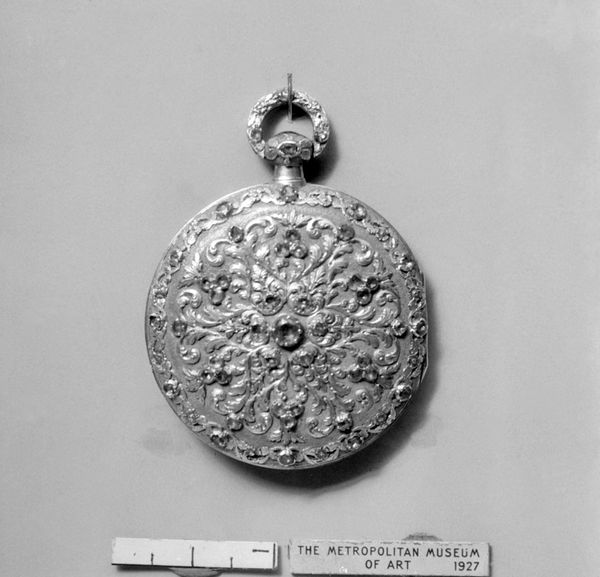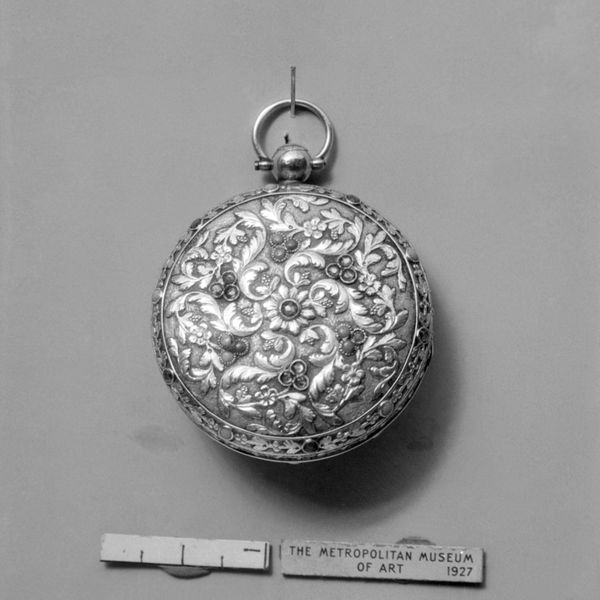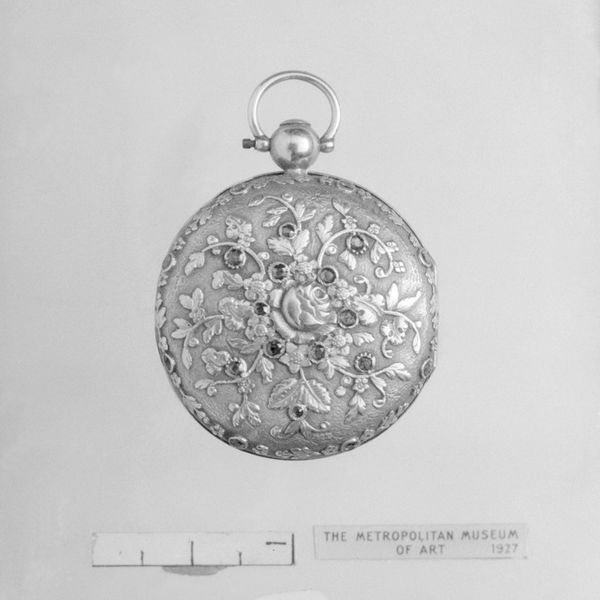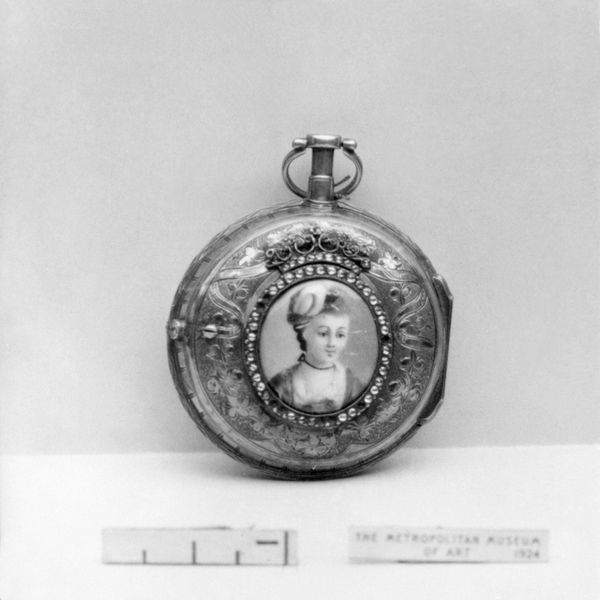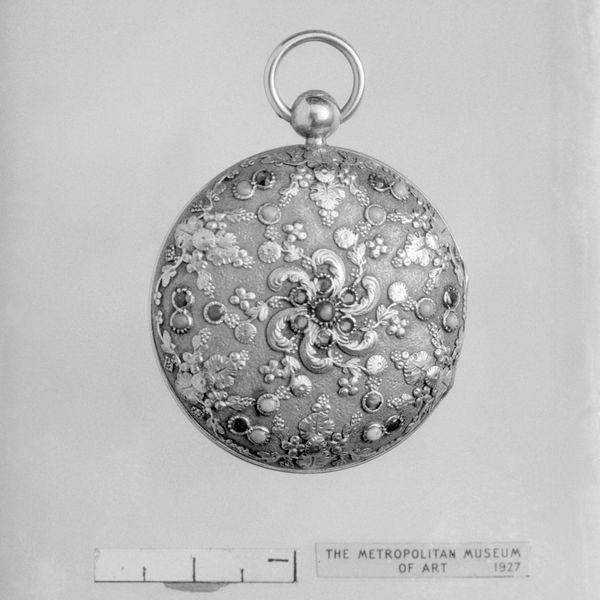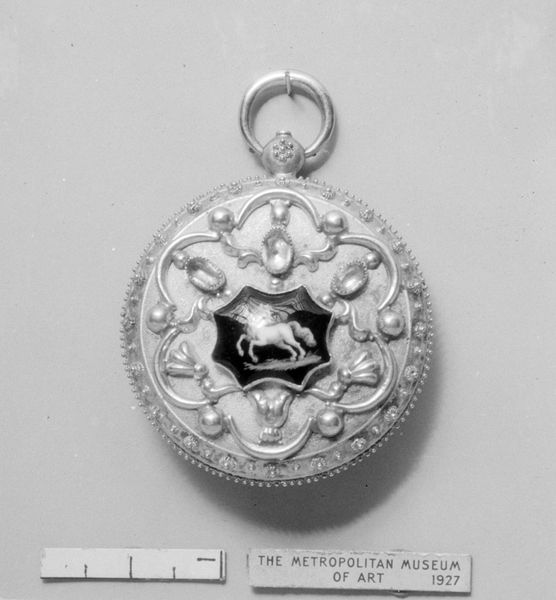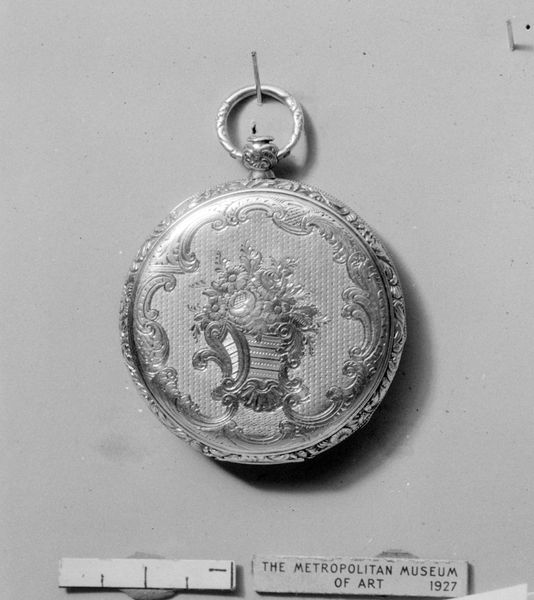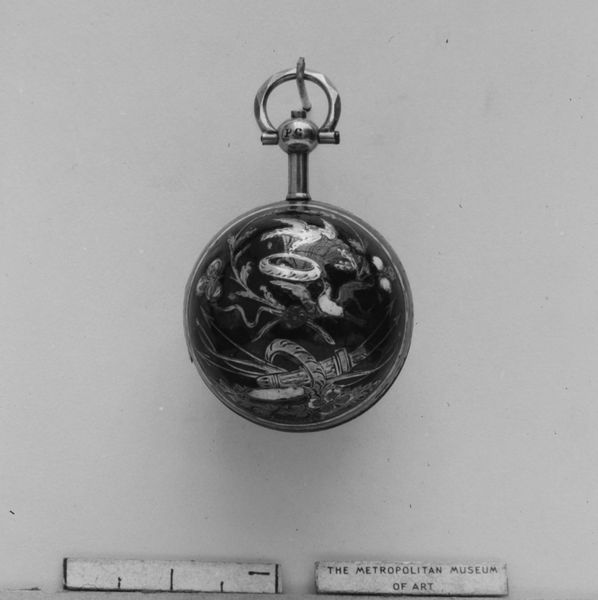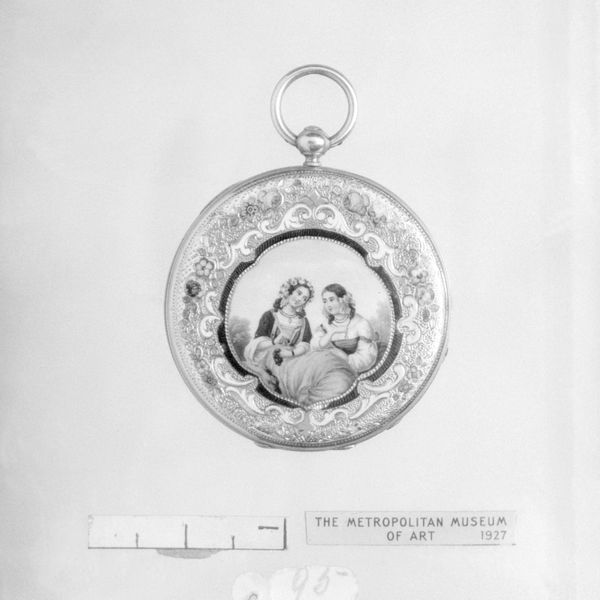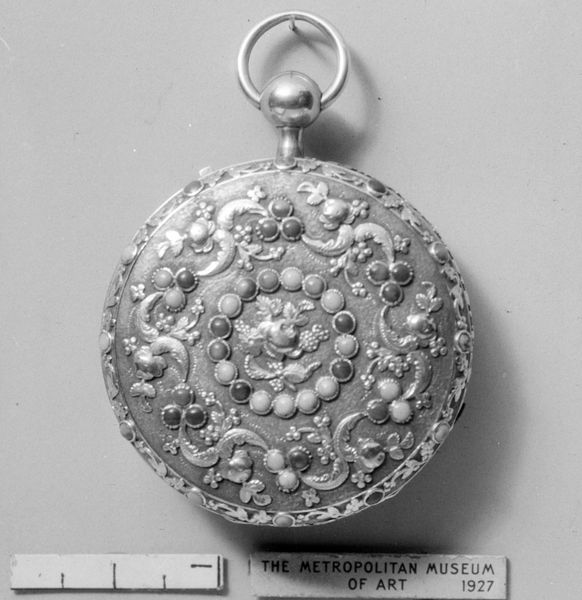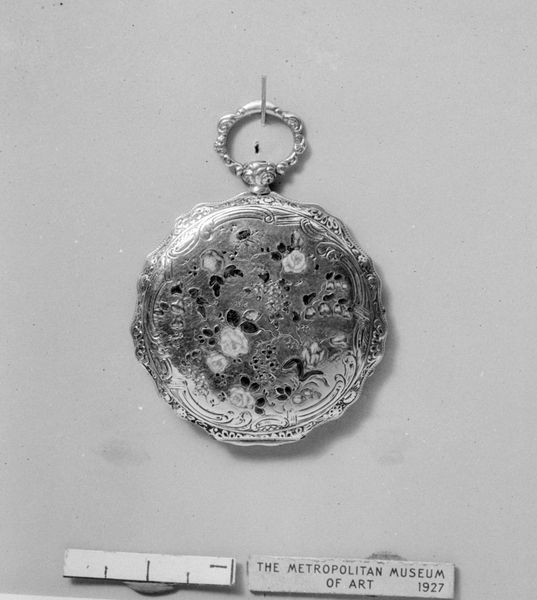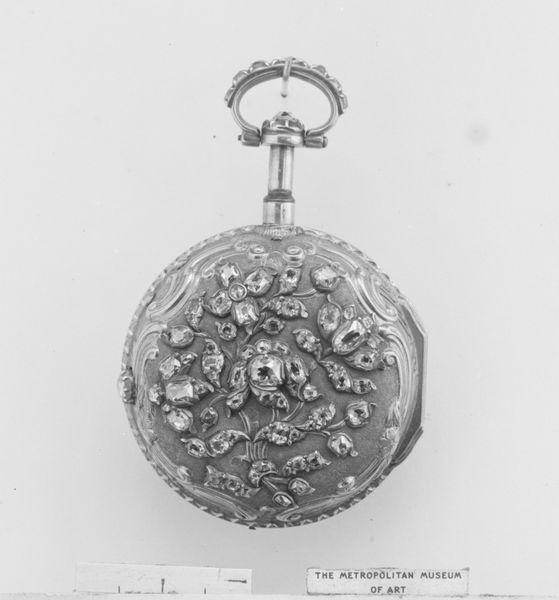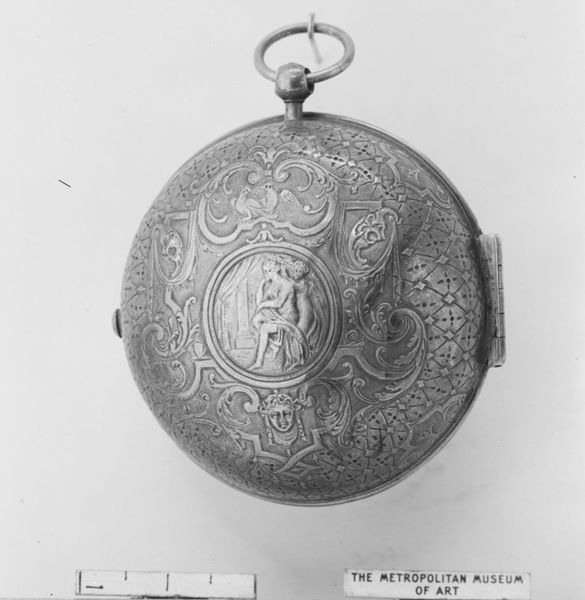
Dimensions: Diameter: 1 9/16 in. (4 cm)
Copyright: Public Domain
Editor: So, this is a metal "Watch" crafted sometime between 1825 and 1835 by the Firm of Rey Frères. It’s quite ornate! I'm curious – what strikes you about it? Curator: The level of detail speaks volumes about social and economic power at the time. It is no mere time-telling device; its aesthetic screams wealth. Can we consider this opulent, impractical piece through the lens of labor? Think about the immense skill and time, therefore expensive labor, required to produce the detailed Baroque decoration. Who had access to such craftsmanship and, conversely, whose time was considered less valuable, even expendable? Editor: I see your point! It’s easy to get lost in the aesthetics, but not as easy to see its history, what it stands for. Did people challenge such displays of wealth? Curator: Absolutely. As timepieces like these became more widespread, albeit still luxury items, they also became associated with industrial discipline, controlling time, controlling labor. Can we read the watch, then, as both a status symbol and an instrument of control? Editor: It is more charged than I initially realized! To consider it beyond its material value… Curator: Precisely. What stories do objects tell about the societies that created and consumed them? Who benefited, and at whose expense? It really helps understand our own contemporary social dynamic! Editor: I'll never look at decorative art the same way again. This watch makes me think about economic inequality! Curator: Exactly. Every detail reveals history!
Comments
No comments
Be the first to comment and join the conversation on the ultimate creative platform.
